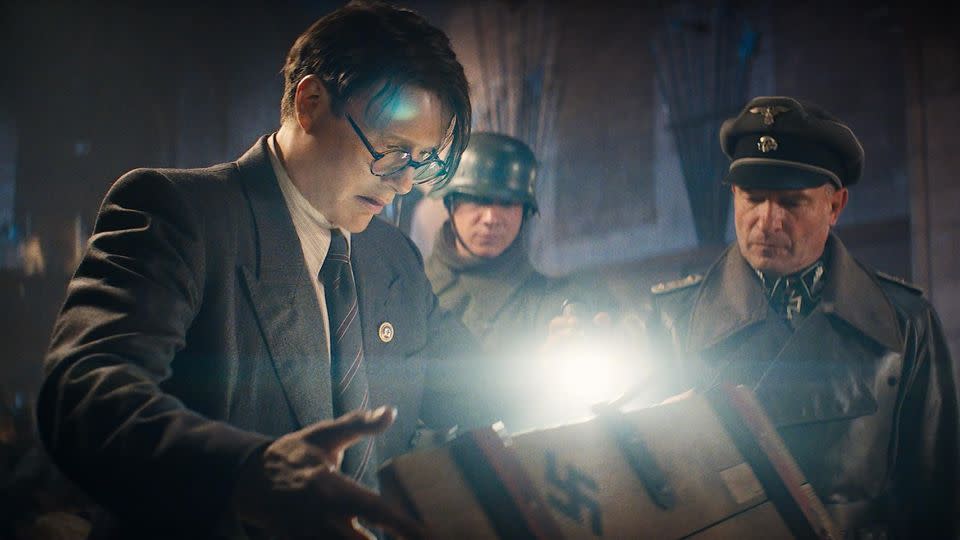Opinion: Indiana Jones passes his mantle to the queen of millennial side-eye
- Oops!Something went wrong.Please try again later.
- Oops!Something went wrong.Please try again later.
Editor’s Note: Holly Thomas is a writer and editor based in London. She is morning editor at Katie Couric Media. She tweets @HolstaT. The opinions expressed in this commentary are solely those of the author. View more opinion on CNN.
Harrison Ford isn’t an action star. Not according to Harrison Ford, at least. Speaking to Vanity Fair during the press run for “Indiana Jones and the Dial of Destiny,” he explained that the films he’s starred in, rather than depending on kinetic activity alone, had a story. “They had a plot, they had characters, they had conflict,” he said.

Ford’s resistance to being defined by movement is timely. At 80, he’s more than twice the age he was in 1981 when he first assumed the role of Indiana Jones, the daredevil archaeologist whose perpetual motion was ensured by director Steven Spielberg’s unprecedented zeal for death-defying stunts in the earlier installments.
It’s understandable, too. Slimmer and less overtly muscular than 80s contemporaries like Arnold Schwarzenegger and Sylvester Stallone, Ford’s allure has always been in his personal magnetism, not his brawn. Yet for all his lack of tree trunk biceps, Indiana Jones was always vivacious: outrunning boulders, sparring countless Nazis, and sprinting across collapsing rope bridges.
All that changes in “Dial of Destiny,” which was released in theaters last week. In this (supposedly) final outing, we meet Indy in 1969 at least 25 years past his prime, dozing through the moon landing and sick to the back teeth of his job as a college professor. He’s roused from his stupor by the arrival of his wily goddaughter Helena, played by Phoebe Waller-Bridge. Together, they embark on a mission to retrieve the Antikythera, a time-traveling device invented by Archimedes (yes).

It’s a mantle-passing in every sense: From Jones to his younger relative, and from a Hollywood legend to the queen of millennial side-eye. The contrast is heightened by Waller-Bridge’s anchorage in the popular imagination as Fleabag — of which we are constantly reminded, thanks to Helena’s naked self-interest occasionally tempered by glimpses of heart. The insertion of such a conspicuous 21st-century yardstick exposes another development: the inflation of supposedly normal people’s physical abilities on our screens.
Helena is not a super athlete, nor endowed with any special powers. Yet she defies physics. The most audacious example comes in the third act, when Helena rides a light motorbike alongside a plane as it’s taxi-ing out of an airport, then leaps from the bike onto the plane’s wheel, and clings on as it’s raised into the body of the aircraft.
The sequence is fun, but at best, it’s a 4/10 on the thrill scale. By this point, we’ve seen Helena fight off crooks, blow up a boatful of Nazis and leap from a racing tuk tuk onto the back of a speeding car. Any anxiety over her welfare has been well and truly cauterized: we know she’s getting on that plane.
That, according to “Dial of Destiny,” is the point. Youth is all-powerful. Age, and its careworn figurehead Indiana Jones, is chastened. When Indy attempts a body tackle, the target remains static, mocking the old man’s futile efforts. It’s far more compelling than Helena’s invincibility.
Indy’s frailty mirrors his more vulnerable emotional state. But it also reintroduces a tension that’s fallen by the wayside in the decades since he first appeared on our screens: that between what the human body can actually do, and what the story asks of them.
Ford’s insistence on acting his age and assurances that he doesn’t do stunts run counter to a trend that has seen characters’ — and actors’ — athleticism amplify in proportion to the sophistication of special effects. Yes, there’s a world beyond Marvel. There are non-superhero action movies that lean less on CGI and tout the extraordinary prowess of their stars — the Mission Impossible series and Tom Cruise being exemplars. But even these understand that to wow audiences, characters’ bodies must become superhuman.
The strength and stamina that used to be explained away by physiques like Schwarzenegger’s are taken for granted no matter how characters look. Rare moments of weakness are quickly subverted by skydives.
So much of the adrenaline of the original Indiana Jones trilogy derived from their massive, intricate sets and intensely choreographed scenes that these days are largely replaced by green screens. Now, acclimated as we’ve become to indestructible characters leaping from animated flames, we need an octogenarian star to reintroduce the idea that the hero might not survive.
In aging Indy by several decades, “Dial of Destiny” brings his abilities more in line with those of a real man in his 40s, rather than one on the verge of retirement.
Ford is atypical as a representative of the elderly, he’s still Harrison Ford, for goodness’ sake. Yet his undeniable limits offer opportunities for jeopardy that don’t depend on outrageous computer-animated explosions, or 20-thousand-foot falls. It would be interesting if similar restrictions were applied to the next generation: If Helena’s character existed within Fleabag’s body. After all, it’s not (just) the age, honey. It’s the mileage.
For more CNN news and newsletters create an account at CNN.com

